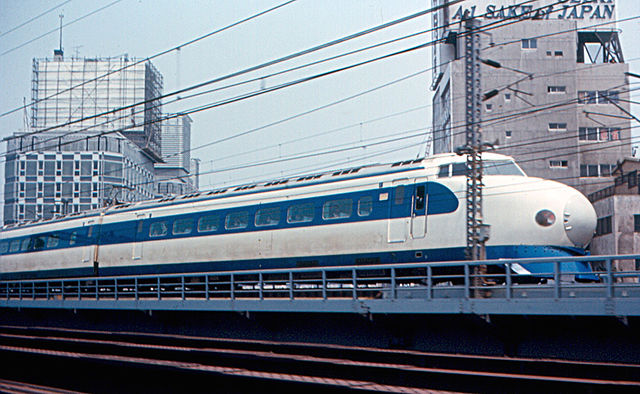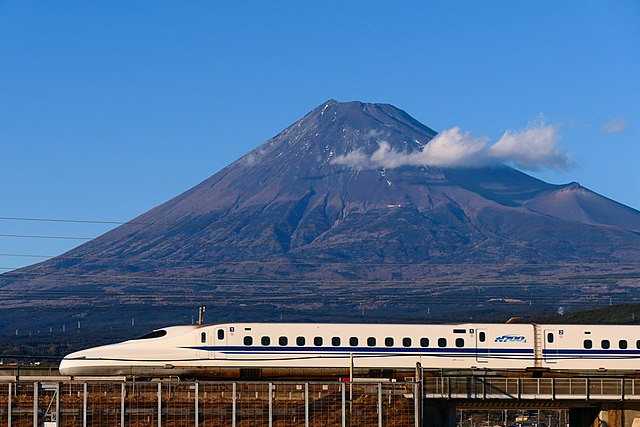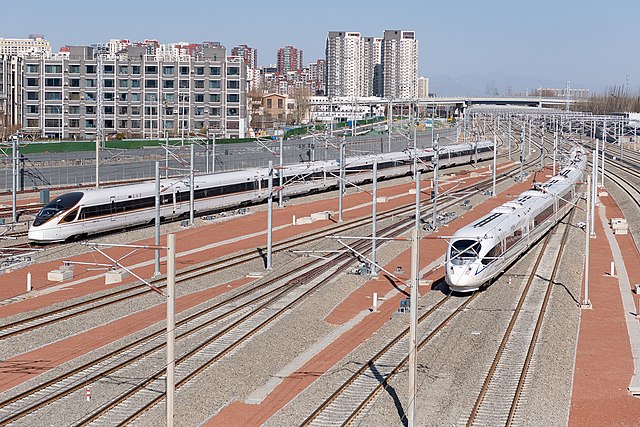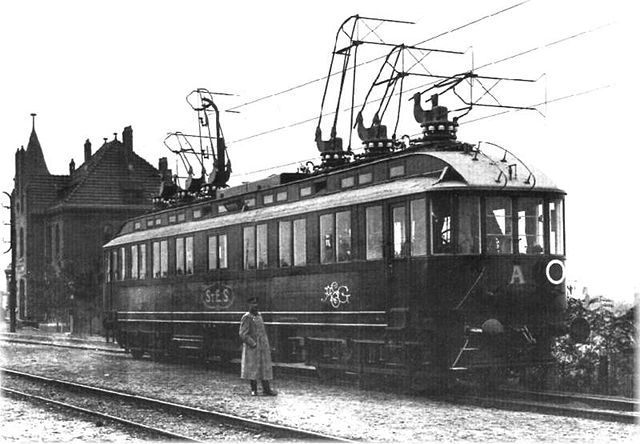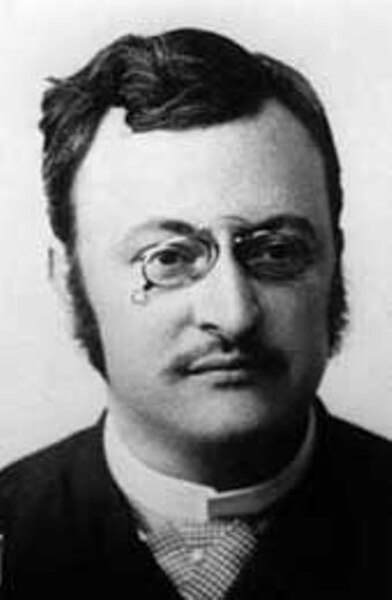The Shinkansen , colloquially known in English as the bullet train, is a network of high-speed railway lines in Japan. Initially, it was built to connect distant Japanese regions with Tokyo, the capital, to aid economic growth and development. Beyond long-distance travel, some sections around the largest metropolitan areas are used as a commuter rail network. It is owned by the Japan Railway Construction, Transport and Technology Agency and operated by five Japan Railways Group companies.
A lineup of JR East Shinkansen trains in October 2012
A lineup of JR West Shinkansen trains in October 2008
A 0 series set in Tokyo, May 1967
Shinkansen standard gauge track, with welded rails to reduce vibration
High-speed rail (HSR) is a type of rail transport network utilizing trains that run significantly faster than those of traditional rail, using an integrated system of specialized rolling stock and dedicated tracks. While there is no single standard that applies worldwide, lines built to handle speeds above 250 km/h (155 mph) or upgraded lines in excess of 200 km/h (125 mph) are widely considered to be high-speed.
The Tokaido Shinkansen high-speed line in Japan, with Mount Fuji in the background. The Tokaido Shinkansen, which connects the cities of Tokyo and Osaka, was the world's first high-speed rail line.
High-speed trains operated by China Railway at Beijing Chaoyang railway station; China has the most extensive high-speed rail network in the world.
The German 1903 record holder
Károly Zipernowsky



